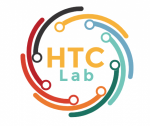https://psyarxiv.com/743hn/
Decision makers such as industrial and organizational psychologists often combine multiple pieces of information to make performance predictions and hiring decisions. More valid performance predictions are made when information is combined algorithmically (mechanical prediction) rather than in the decision-maker’s mind (holistic prediction). Yet, decision makers rarely use algorithms to make performance predictions in practice, which is also known as algorithm aversion. Decision makers underutilize algorithms partly because they are worried about negative evaluations from stakeholders such as colleagues when using algorithms. Based on attribution theory, we hypothesized that stakeholders evaluate decision makers more positively when they use autonomy-enhancing algorithmic procedures (AEAPs, holistically adjust predictions from a prescribed algorithm or self-design an algorithm), than when they use a prescribed algorithm. Relatedly, based on the theory of planned behavior, we hypothesized that decision makers who use AEAPs are less worried about negative stakeholder evaluations, and more likely to use algorithms in performance predictions. In Study 1 (N = 582), the results showed that stakeholders evaluated decision makers more positively when they used AEAPs rather than a prescribed algorithm. In Study 2 (N = 269), the results showed that decision makers were less worried about negative stakeholder evaluations and more likely to use AEAPs compared to a prescribed algorithm. Importantly, AEAPs also resulted in substantially higher predictive validity than holistic prediction. Based on our results, we suggest that decision makers should combine predictors with a self-designed algorithm to achieve acceptable stakeholder evaluations and predictive validity.
Decision makers such as industrial and organizational psychologists often combine multiple pieces of information to make performance predictions and hiring decisions. More valid performance predictions are made when information is combined algorithmically (mechanical prediction) rather than in the decision-maker’s mind (holistic prediction). Yet, decision makers rarely use algorithms to make performance predictions in practice, which is also known as algorithm aversion. Decision makers underutilize algorithms partly because they are worried about negative evaluations from stakeholders such as colleagues when using algorithms. Based on attribution theory, we hypothesized that stakeholders evaluate decision makers more positively when they use autonomy-enhancing algorithmic procedures (AEAPs, holistically adjust predictions from a prescribed algorithm or self-design an algorithm), than when they use a prescribed algorithm. Relatedly, based on the theory of planned behavior, we hypothesized that decision makers who use AEAPs are less worried about negative stakeholder evaluations, and more likely to use algorithms in performance predictions. In Study 1 (N = 582), the results showed that stakeholders evaluated decision makers more positively when they used AEAPs rather than a prescribed algorithm. In Study 2 (N = 269), the results showed that decision makers were less worried about negative stakeholder evaluations and more likely to use AEAPs compared to a prescribed algorithm. Importantly, AEAPs also resulted in substantially higher predictive validity than holistic prediction. Based on our results, we suggest that decision makers should combine predictors with a self-designed algorithm to achieve acceptable stakeholder evaluations and predictive validity.
Latest posts by Ryan Watkins (see all)
